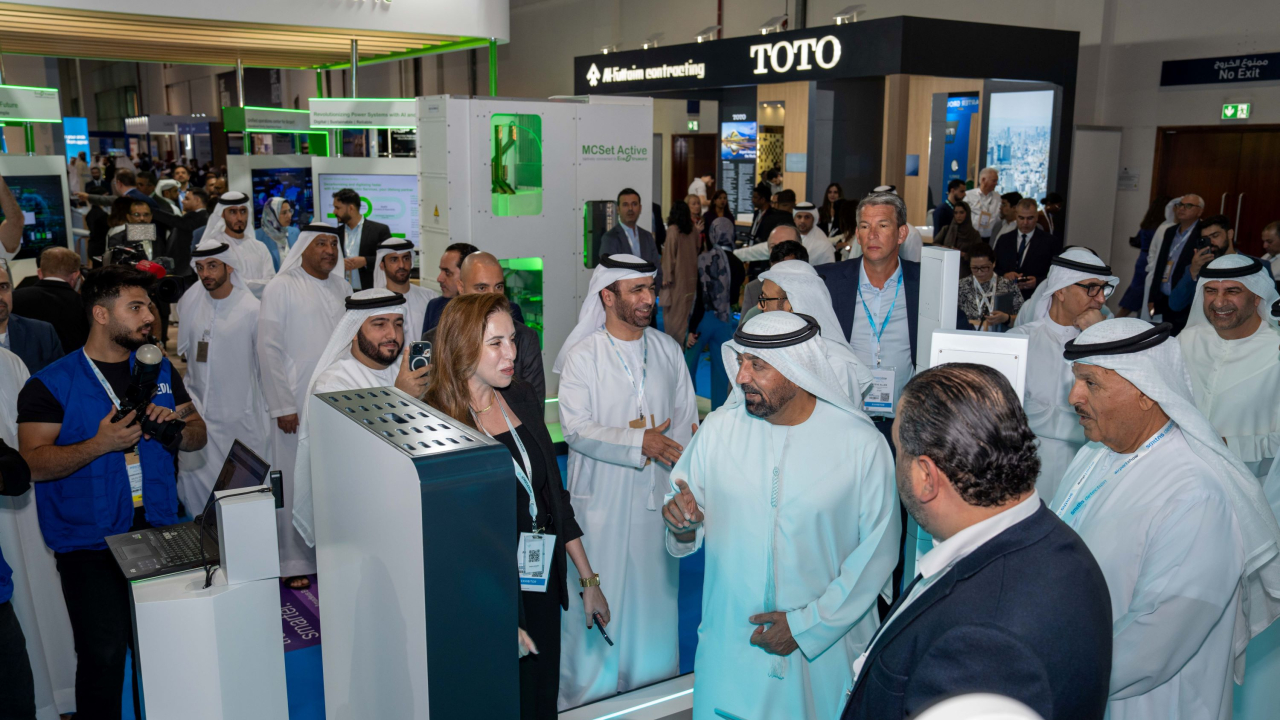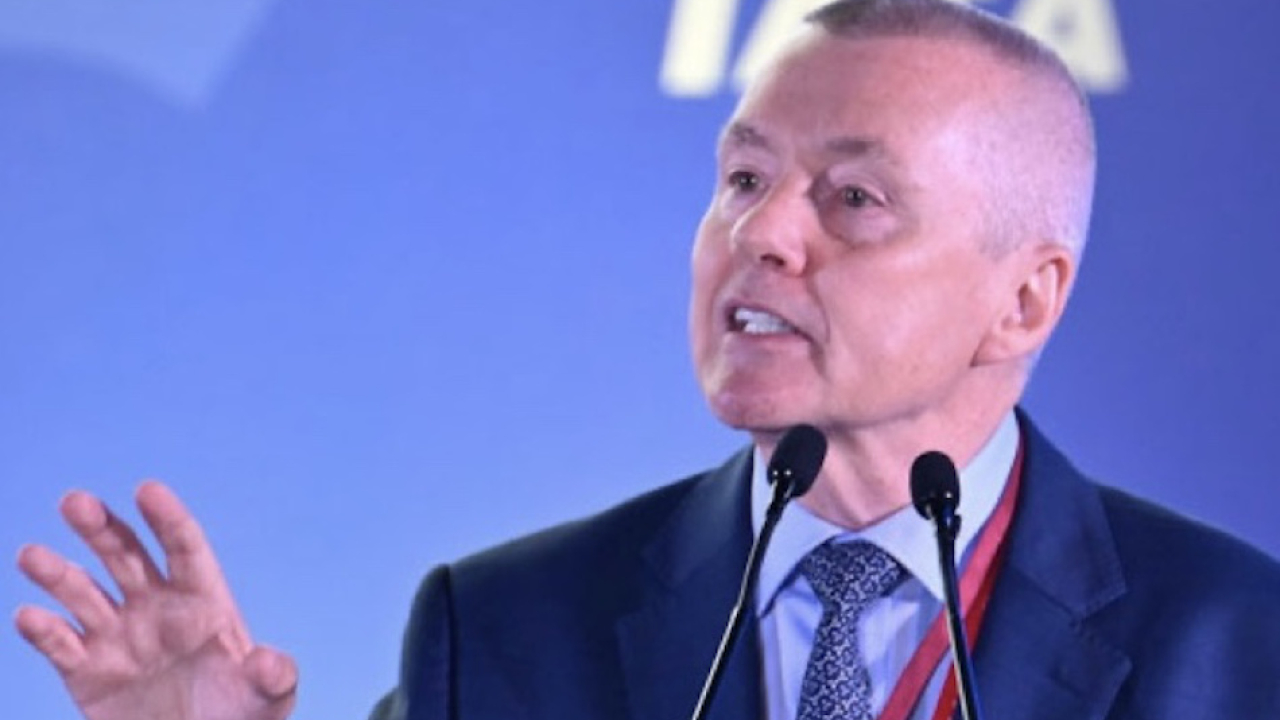Airport Show to highlight US$1 trillion airport development in MEASA region
The 24th edition of the Airport Show opens today at the Dubai World Trade Centre (DWTC).

Image: Naddalshiba
The event will reveal US$1 trillion expansion projects in the Middle East, Africa and South Asian (MEASA) markets.
The event is held under the patronage of His Highness Sheikh Ahmed bin Saeed Al Maktoum, President of the Dubai Civil Aviation Authority, Chairman of Dubai Airports, Chairman and Chief Executive of Emirates Airline and Group.
Over three days, from May 6 to May 8, the Middle East, Africa and South Asia’s (MEASA) largest airport industry B2B platform, is due to draw over 6,000 attendees from more than 30 countries, to explore innovations and technologies that shape future airports including advances in enhancing the passenger experience, airport traffic management, airport carbon-reduction and sustainability, digitalisation, and Urban Air Mobility (UAM).
This edition is being attended by more than 140 exhibitors from 20+ countries who will meet, network and do business with highly-qualified 50+ buyers from over 70 organisations from 30 countries.
Confirmed buyers are coming from airports, airlines, ground handlers and consultants from Armenia, Bahrain, Croatia, Djibouti, Egypt, Ghana, India, Iraq, Italy, Jordan, Kenya, Kuwait, Lebanon, Malawi. Malaysia, Maldives, Morocco, Nigeria, Oman, Pakistan, Qatar, Rwanda, Saudi Arabia, Seychelles, Sri Lanka, Tanzania, Turkey, Uganda, and Uzbekistan.
His Highness Sheikh Ahmed Bin Saeed Al Maktoum said: “Dubai International (DXB) has retained its position as the world’s leading airport for international passengers for the 11th consecutive year, and traffic across both our airports continues to grow steadily. Our aviation sector, from airports and airlines to the wider infrastructure, is a key pillar of Dubai’s economic progress and global reach.”
He added: “We have made consistent investments to expand and upgrade our airports, strengthening Dubai’s role as a global gateway. Over the past two decades, Dubai has provided the ideal environment for the Airport Show to grow into a prominent industry platform, a reflection of the city’s broader role in shaping the future of global aviation. With the planned expansion of Dubai World Central – Al Maktoum International (DWC), we are now setting the stage for a new era of global benchmarks in airport development.”
His Highness recalled: “Beginning in 2001, I have seen the Airport Show grow leaps and bounds evolving over the years into the MEASA region’s largest airport industry B2B platform. It offers key stakeholders, policy makers and technical decision-makers an opportunity to network, exchange knowledge and gain insights, and discuss growth opportunities and challenges facing the aviation industry. The 24th edition of the Airport Show will undoubtedly take the collaborative journey of growth to new levels.”
H.E. Mohammed Abdulla Lengawi, Director General of the Dubai Civil Aviation Authority, said: "We at the Dubai Civil Aviation Authority are pleased to participate in Airport Show 2025, a global platform bringing together aviation leaders and experts from around the world.”
“Our participation reflects our commitment to strengthening Dubai’s position as a leading global aviation hub through innovation, best practices, and a focus on safety, security, and sustainability. We believe that collaboration and knowledge exchange are key drivers of progress, and we look forward to engaging with our partners and exploring opportunities that support the growth of this vital sector,” he added.
The Show is designed to serve the US$1 trillion airport development market in the Middle East, Africa and South Asia (MEASA) region. Airports in the Middle East region will handle 1.1 billion passengers by 2040. Africa is focusing on expanding existing hubs and building new airports to become a major aviation hub. According to CAPA-Centre of Aviation, there are now24 infrastructure projects at existing airports in Africa, to a value of US$2.3 billion, or US$96 million each on average.
In Ethiopia, a new airport is under construction to handle 60 million passengers annually by 2040, aiming to become the largest in Africa. In Senegal, Blaise Diagne International Airport is under construction in two phases, with a final capacity of 10 million passengers per year.
Rwanda’s new US$650 million Kigali Airport is under construction. South Asia is witnessing rapid expansion and modernisation of airports, particularly in India. The world’s most populous country plans to build over 220 new airports by 2035. India’s airport sector is expected to attract about US$12 billion) in investment by 2030 for developing greenfield airports, expanding existing facilities, and upgrading infrastructure at existing airports.
Special focus at the gathering will on the US$35 billion development of Al Maktoum International Airport (AMIA-DWC), with a final a capacity of 260 million passengers upon completion. Saudi Arabia, targeting 300 million passengers by 2030, is constructing the US$50-billion mega hub in Riyadh. These two giant projects take up almost 80 percent of spending on airport development across the Middle East and North Africa (MENA).
On its sidelines will be two conferences – Global Airport Leaders’ Forum, and Women in Aviation Middle East Conference- with 30+ sessions and 70+ aviation leaders and expert speakers. The 12th Global Airport Leader’s Forum (GALF) designed to take forward the aviation knowledge-enhancement agenda with keynote speeches from Lt. Gen. Mohammed Ahmed Al Marri, Director-General, General Directorate of Residency and Foreigners Affairs (GDRFA), and Abdulla Al Shamsi, Director of Engineering, Dubai Aviation Engineering Projects (DAEP).
The exhibition will be a go-to destination for experiencing and procuring newest innovations and trend-setting technologies, as well as signing deals that enable airports to achieve exemplary growth.
The GALF will see 50+ aviation, policy makers, airport business leaders, and technology experts to foster meaningful engagement and knowledge sharing on critical challenges and growth opportunities in the technology-driven world.
May Ismail, Event Manager at RX Middle East, invited airport industry professionals to utilise the Airport Show (10 AM to 5 PM) and its conferences including GALF to ‘refresh and reenergize’ their knowledge and technical skills. The participants can meet several key players including those from Honeywell, emaratech, Smiths Detection, ADB SAFEGATE, NAFFCO, Schneider Electric, Siemens, Dar Al Handasah, and Artelia Aviation Information Technology Company.
Airport Show 2025 is set to deliver an enhanced experience with the launch of new features, including the GSE Zone, Airport Tech Pavilion, and Airport Design Hub. This year’s event continues to enjoy the strong backing of key aviation authorities and organisations, supported by the Dubai Civil Aviation Authority, Dubai Airports, Dubai Aviation Engineering Projects, Emirates Airline and Group, dans and dnata.
Leading industry players have also come on board as event partners and sponsors. Amadeus leads as the event’s Strategic Partner, with Schneider Electric joining as Technology Partner. Gold Sponsor Waisl has joined sponsors Dubai Air Navigation Services (dans), Smiths Detection and ADB SAFEGATE.
The ATC Forum benefits from the support of both Dubai Air Navigation Services (dans) and Global Air Navigation Services (GANS), while the Airport Security Forum is backed by Dubai Police.
Airport Show 2025 is collaborating with several leading associations, including the Women in Aviation Middle East Chapter, the Contractors Association, the Supply Chain and Logistics Group (SCLG), and the Dubai Airline Operators Committee (DAOC).
By 2050, approximately 66.7 million people will travel by air in the Middle East. The Middle Eastern airports will require US$151 billion in investments by 2040 to handle an expected surge in passenger numbers. The Middle Eastern airlines saw a 9.4 percent traffic rise in 2024, with capacity increasing 8.4 percent and load factor rising to 80.8 percent.
Stay up to date
Subscribe to the free Times Aerospace newsletter and receive the latest content every week. We'll never share your email address.

